

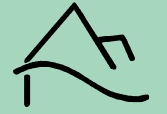
The Turf House
Text from “Iron Age Farm: the Butser Experiment”
One of the clearly stated aims of the Research project is its educational capacity. In fulfilling this role courses are regularly held throughout the year for students of all ages. During one such course in the winter of 1972-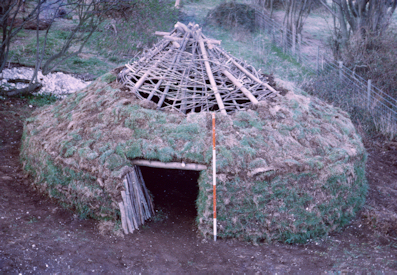
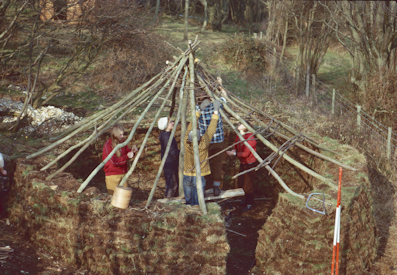
The house, some 6m in diameter, was made with turf walls just under a metre thick and a metre high. A central forked post was set in position and supported the major rafters. A rectilinear ring beam, exactly similar to the one in the Maiden Castle house, supported the supplementary rafters. All the rafter ends were simply laid on top of the turf wall. Hazel rods interwoven between the rafters formed the support for the turf roof. The pitch of this roof, because it was made of turf, was low at approximately 30°.
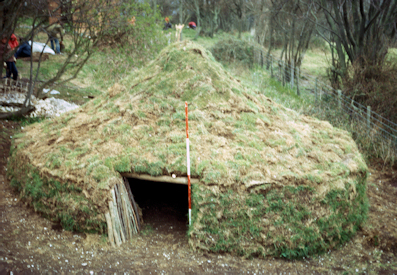
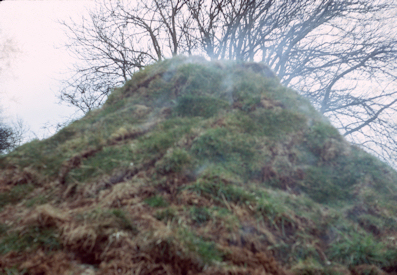
The construction details need not detain us here, other than to explain that a turf house with a turf roof needs a fire permanently burning inside to maintain the roof structure. The turves are put on in two layers – the first grass downwards, and the second, sealing the joints of the first layer, grass uppermost. The object of the fire is to provide sufficient temperature in the roof space to encourage grass growth and therefore rooting of the upper layer. The roots thus hold the roof together. It was impossible to maintain a permanent fire within this house and it was decided to allow it to collapse and monitor the collapse over a number of years. Within months the roof fell in and the wall began to deteriorate. At present it looks rather like a robbed-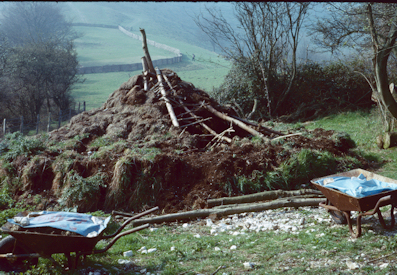
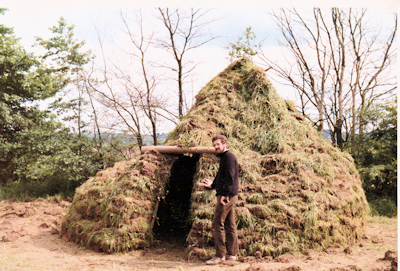
This was a straightforward experiment but with considerable significance, because it argues for increased care in excavation. Houses made with turf walls and roofs are not unlikely in the prehistoric period, although none has yet been isolated. Nonetheless, there are ethnographic examples of such houses, both round and rectangular. With normal excavation procedure one will locate only the post-
For a turf house such as the one described above one can hypothesize a number of probable distribution patterns – for example, occupation debris spread over a circular area, with or without a central post-